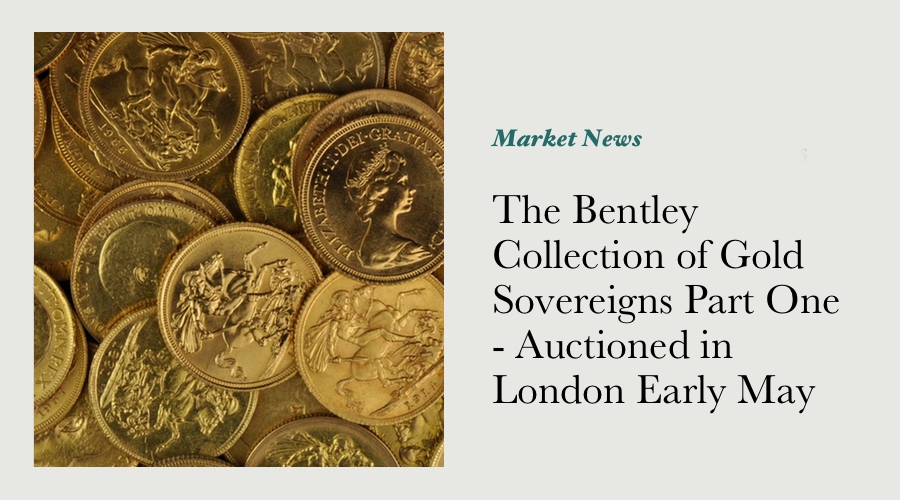The Bentley Collection of Gold Sovereigns Part One - Auctioned in London Early May 2012

Although there have been a (relatively small) number of books dedicated to presenting a comprehensive written history of the British sovereign, there has never been a collection equal to these books in their scope and quality, until now.
The first of three auctions of “The Bentley Collection” comes under the hammer in London on May 8th - it’s an unprecedented collection of Britsh sovereigns, 381 different British sovereigns, each as important as the other to the collector that built it.
Having now spent some time reading the handsome auction catalogue compiled by Baldwin’s, a couple of things strike me about the sale, and how it reflects on the British coin market:
Some of the early British sovereigns look incredibly cheap! Not only are some of them nearly four decades older than our earliest coins, but in mint state they’ve been estimated to start at less than A$6,000. (Just whether they finish at those figures is another matter altogether of course.)
While many of us may have as much interest in British sovereigns as an Australian beer enthusiast may have in an esteemed English beer such as Bass Ale (all good and well to drink, but why stray away from the home-grown stuff), there can be no doubt that the early sovereigns from George III in premium condition have something special about them.
If some of these historic and beautiful coins, some just a few years shy of two centuries old, can be acquired for less than A$10,000 apiece, that has to be great value for money.
Production errors on British sovereigns aren’t entirely unheard of, particularly during the Victorian era. There’s been a significant increase in the number of collectors studying Australia’s sovereigns and half sovereigns in the past few years - many dates, particularly in the Young Head series, have been re-classified according to the obverse and reverse dies used to strike them.
Further research has identified a number of rare and interesting die varieties, these have been mainly struck prior to the 1870’s. Nowhere is this enthusiasm for the identification and classification of die varieties evident than in the auction catalogue for the Bentley Collection.
The section of the Bentley Collection covering the Queen Victoria Young Head series between 1837 and 1863 includes some 64 coins - a rough tally while writing this shows me that there are at least 26 varieties among them! (And that wasn’t counting the coins that I deem to be minor varieties, i.e. “High 6” and the like.)
The list of 26 Queen Victoria Young Head sovereign varieties in the Bentley Collection includes coins that have: inverted digits in the date, inverted letters in the legend; re-entered letters in the legend; overdates and letters re-entered over each other.
That’s a cast bigger than the average Gilbert & Sullivan musical, and should be a good sign that antipodean sovereign enthusiasts such as ourselves will do well to check each and every coin that comes our way - if we aren’t doing so already.
I’m starting to believe that there could be a reasonable degree of risk in noncholantly accepting that all the Australian gold coin varieties under the sun have already been discovered.
Seeing the British sovereigns in the Bentley Collection treated with nigh-scholarly respect, presented in a beautiful catalogue and celebrated for their rarity and historical relevance leads me to believe that if the sale is a success, and I’m certain it will be, the flow-on effect for the Australian market can only be positive.
The results of the auction of the first part of the Bentley Collection will be known within the next few days as this is written - I’m looking forward to seeing the numbers and reading about how it all went down.